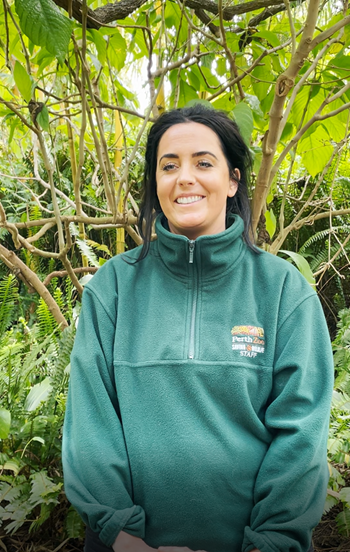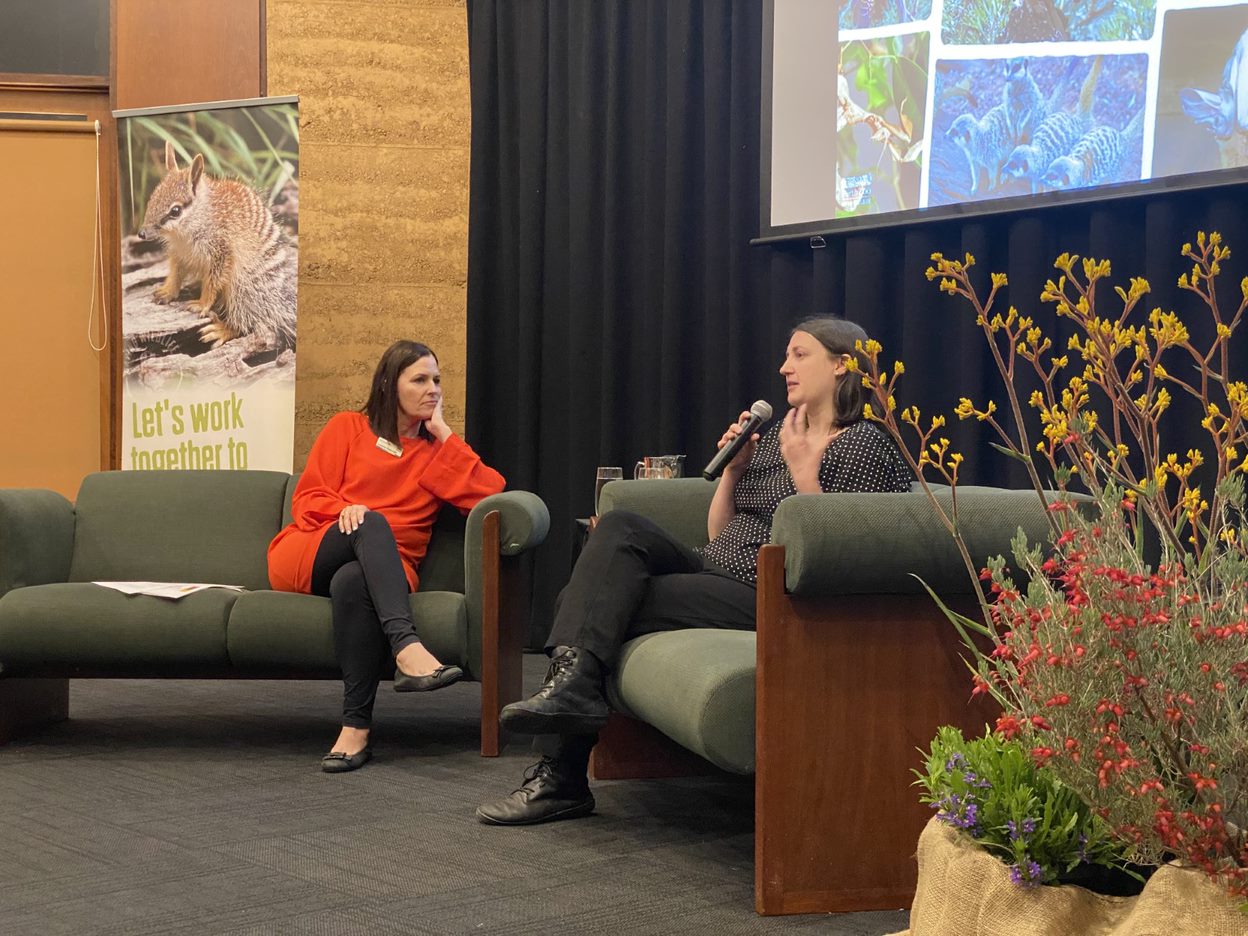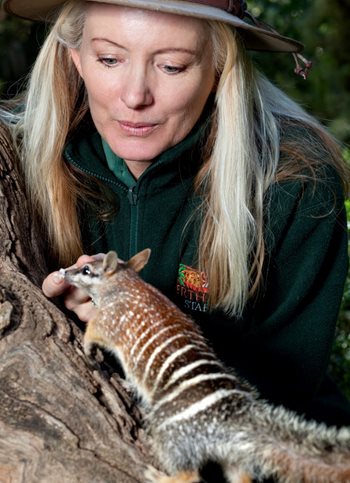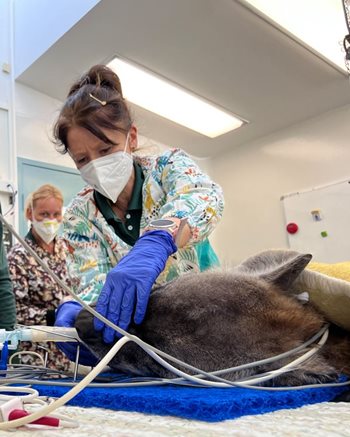Today, on Women and Girls in Science Day, we’re shining the spotlight on some of the incredible women who are giving their all to conservation.
Jenna Hollamby, Supervisor Zoology
 How does your job at Perth Zoo involve science?
How does your job at Perth Zoo involve science?
I’m Supervisor of Zoology within the Australian fauna section. That means I oversee and coordinate the zoo keepers that work in the Australian Bushwalk and Nocturnal House.
A big part of my job is empowering my team to use science and tech to gain insights into the lives of our animals. We are constantly gathering data that can help us provide the very best care for the animals.
For example, we set up cameras to observe behaviour without interruption, use data loggers to monitor areas like nest boxes to make sure the temperatures are optimal, and we create individual charts for every single animal so that we have plenty of data to share with the vet department if an animal is unwell.
What’s a scientific achievement you’re most proud of?
This month, I will graduate with a Masters in Wildlife Health and Conservation, and I am very much looking forward to combining my 12 years in animal husbandry experience with the last four years of studies.
I’m also pursuing a scientific paper on the benefits of training programs for Sumatran Orangutans to improve welfare in a captive environment. Aside from my work with Perth Zoo, I volunteer my time to a wildlife organisation in Indonesia, and my main goal is to increase the availability of this information and improve the welfare of orangutans around the world.
What advice would you give to young people wanting a career in science?
Always be curious and find the positive in every situation. It may sound cliché but the opportunities I have been most hesitant about have almost always been the most rewarding.
Travel and see the world, it will give you experiences that you will use in every aspect of your life and make you an adaptable person who can handle change. That is where you will grow.
Emily Polla, Animal Behaviour and Welfare
 How does your job at Perth Zoo involve science?
How does your job at Perth Zoo involve science?
I use science and technology to gain a better understanding of the animals’ behaviour and welfare states.
This includes reading, writing and peer-reviewing scientific literature, so we can all learn more about animal welfare from others in the scientific community.
What’s a scientific achievement you’re most proud of?
One of the most rewarding things about my role is having our research published so that other people can learn from it.
Another highlight was working with Microsoft to investigate the abilities of artificial intelligence to reveal meerkat patterns of behaviour using CCTV footage.
What advice would you give to young people wanting a career in science?
Animal welfare science wasn’t an available subject when I started studying as it was such a new field.
However, I was able to combine psychology and zoology to gain an understanding of animal behaviour, how their brains function and what’s important to them to ensure good welfare.
My advice would be to look for opportunities to adapt your studies to your interests and consider volunteer opportunities to gain experience.
Vicki Power – Numbat Species Coordinator and zoo keeper
 How does your job at Perth Zoo involve science?
How does your job at Perth Zoo involve science?
I’m the species coordinator for the Numbat breeding program – aka a numbat zookeeper! Each day, I feed and monitor the health and breeding condition of the animals in our care.
During breeding season, we closely monitor and document the oestrus cycle of females and sperm production of the males. Females are only in oestrus for 24-48 hours a year! To monitor, we make a smear on glass slides from a cloacal sample of the females, stain it using special dye and then examine it under the microscope.
What’s a scientific achievement you’re most proud of?
A big one was the development of the numbat breeding protocol at the Zoo, and breeding numbats for the very first time in 1992. Perth Zoo is the only place in the world that breeds this species!
Another important achievement I’m proud of was the development of the termite trapping technique to feed our Numbats at Perth Zoo. Numbats can eat up to 20,000 termites a day, and the development of a reliable sustainable trapping system is critical to the breeding success we experience today.
What advice would you give to young people wanting a career in science?
If you’re passionate about working with animals in conservation, don't be discouraged by the difficulties in trying to secure work. It will be challenging at times but stick with it.
Be open to traveling to interstate and internationally to gain experience, and be prepared to volunteer in a zoo or wildlife park. And never stop learning! Always take the opportunity to learn from more experienced zookeepers whenever an opportunity arises.
Rebecca Vaughan-Higgins, Veterinarian

How does your job at Perth Zoo involve science?
I am a zoo and wildlife veterinarian which involves the diagnosis, treatment and management of numerous species and populations at Perth Zoo and our native Australian wildlife species. We work with amphibians, birds, crustaceans, mammals, and reptiles of all shapes and sizes.
It is exciting to continually investigate and learn from human and domestic veterinary medicine and surgery to formulate diagnostic, treatment and management plans often with cutting edge diagnostics and excellent patient outcomes. We also publish papers in human and veterinary journals.
What’s the scientific achievement you’re most proud of?
As part of my joint residency program at Perth Zoo and Murdoch University I conducted my PhD on Australia's most critically endangered mammal the Gilbert's potoroo. This thesis presented baseline blood, cloacal microbiology and urinalysis values and outlined a novel and most importantly, practical, translocation health screening protocol to help management of the species into the future.
What advice would you give to young people wanting to pursue a career like yours?
Volunteer in native animal rehabilitation centres and get to know your local zoo and wildlife veterinarians. Network at zoo and wildlife conferences and work hard at veterinary school to facilitate placements and internships. It is a long road requiring passion, dedication and determination but being able to improve the health status of critically endangered species is just so rewarding.